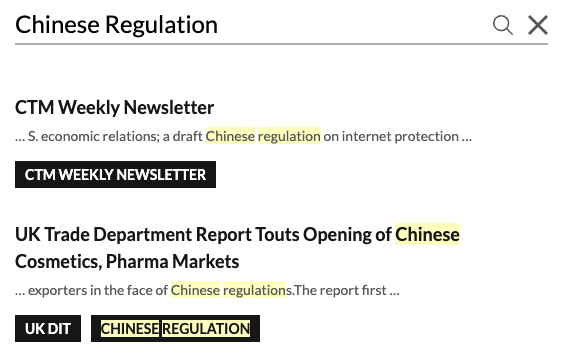We previously reported on the announcement by China’s General Administration of Customs (GACC) that it will stop issuing Generalized System of Preferences (GSP) certificates to Chinese goods that are exported to EU members, the United Kingdom, Canada, Turkey, Ukraine and Liechtenstein, effective on December 1, 2021. Some confusion and questions have arisen from the announcement, especially with regard to its timing. To better understand the issue, China Trade Monitor (CTM) had a conversation with a Chinese legal expert on the Rules of Origin, Zou Ruirui, Director of Legal Affairs Department at China Council for the Promotion of International Trade (CCPIT), Nanjing sub-council.
CTM: Mr. Zou, China’s General Administration of Customs issued a notice on October 25 stating that it will stop issuing GSP certificates to Chinese goods that go to EU members, the United Kingdom, Canada, Turkey, Ukraine and Liechtenstein, taking effect on December 1, 2021. But some of these countries/regions have stopped granting GSP status to China a while ago, right?
ZOU: Yes, the EU removed China from its GSP beneficiaries list as early as 2015 due to the fact that China had been classified by the World Bank as an upper-middle income country in three consecutive years (2011, 2012 and 2013). Canada also issued the General Preferential Tariff Withdrawal Order (No. SOR/2013-161) on September 27, 2013, which stipulated that the entitlement to the benefit of the General Preferential Tariff was withdrawn in respect of all goods originating in China from January 1, 2015.
CTM: Let me use the EU as an example: If the EU stopped granting China GSP status in 2015, why did the Chinese Customs agency make the announcement just now?
ZOU: I think multiple factors contributed to this delay. On the one hand, former General Administration of Quality Supervision, Inspection and Quarantine (AQSIQ), who was in charge of the issue of Form A, failed to notify the trade community of any changes in GSP system before being merged into GACC in 2018. On the other hand, EU customs continued accepting Form A even after the GSP treatment for China and the Form A itself have long gone. I call it the dysfunction of customs cooperation. By contrast, Swiss customs declared the replacement of Form A soon after Switzerland entered into an FTA with China. Last but not least, some exporters failed to keep up with the latest development and ignored the constant reminders from local chamber of commerce, and they continued to use Form A for exports.
The chamber of commerce I referred to here is the CCPIT and its local branches all over China. CCPIT is authorized by Chinese domestic regulations and some FTAs signed between China and other countries to be the issuing authority of certificate of origin including non-preferential and preferential certificate of origin. However, it is the sole responsibility of AQSIQ (now GACC) to issue Form A for Chinese exporters in China. CCPIT set up a task force and an expert panel in 2000s to monitor the development of rules of origin globally. As early as 2015, CCPIT noticed the graduation of China’s exports from some GSP preference-giving countries (namely EU and Canada) and notified the trade community. However, as you can see that the whole GSP system is operated between customs of preference-giving and preference-receiving countries, CCPIT’s influence was limited.
CTM: In other words, over the past six years, some Chinese exporters continued using Form A. Upon their requests for the form, the GACC continued issuing Form A, and the EU continued accepting it, is that right? Does that mean Chinese exporters benefited from any preferential treatment, such as lower tariffs, that they were not supposed to?
ZOU:As a matter of fact, under the above circumstances, Form A became a kind of non-preferential certificate of origin, losing its status as the origin proof under GSP and therefore serving purely as one of many ordinary documents present during the customs clearance.

